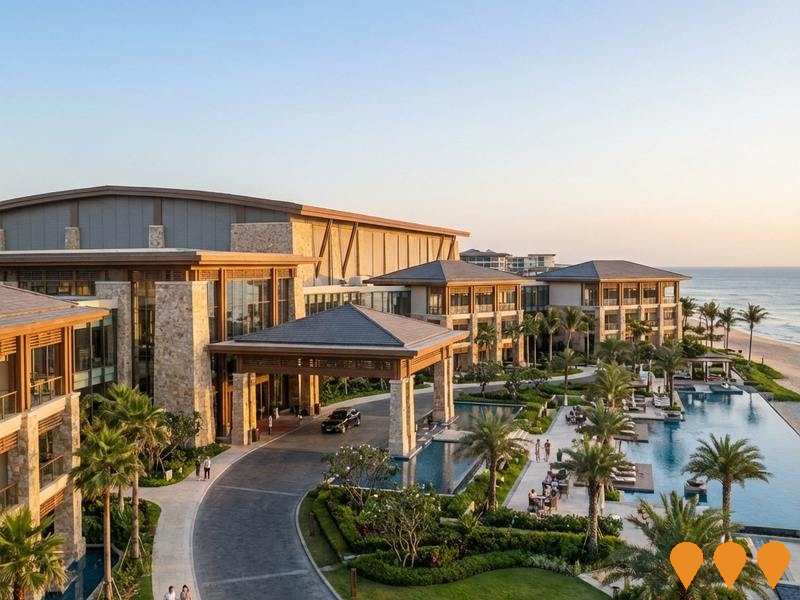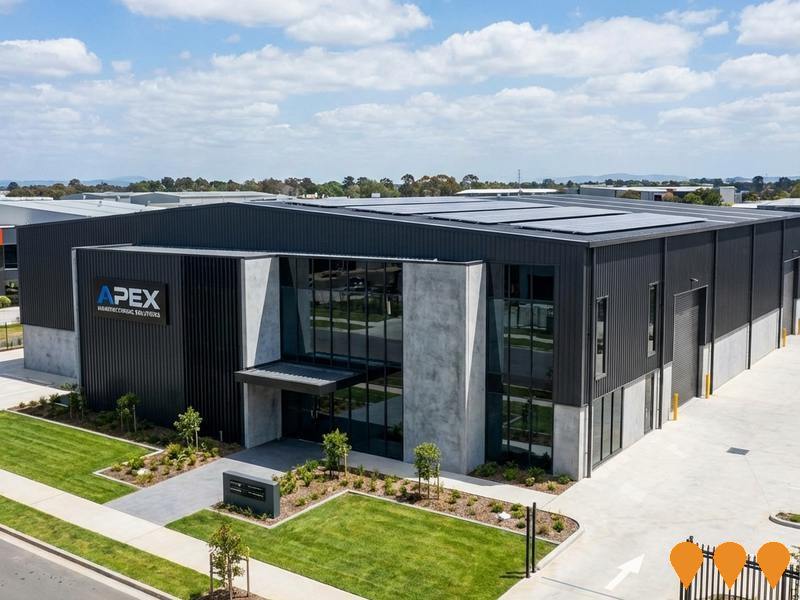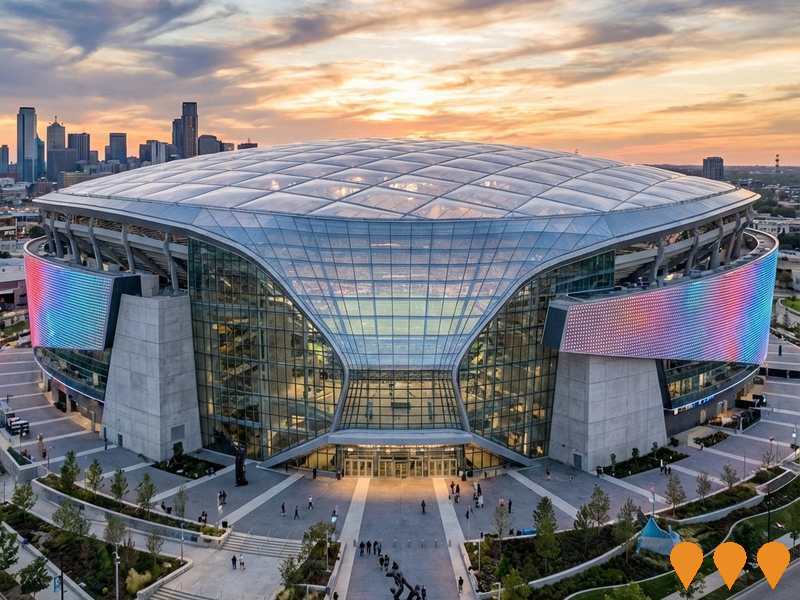Chart Color Schemes
est. as @ -- *
ABS ERP | -- people | --
2021 Census | -- people
Sales Activity
Curious about local property values? Filter the chart to assess the volume and appreciation (including resales) trends and regional comparisons, or scroll to the map below view this information at an individual property level.
Find a Recent Sale
Sales Detail
Population
Population growth drivers in Strathfield - West are strong compared to national averages based on AreaSearch's ranking of recent, and medium to long-term trends
Strathfield - West's population was around 8,986 as of Aug 2025, a decrease of 267 people since the 2021 Census which reported a population of 9,253. This change is inferred from ABS estimated resident population of 8,983 in June 2024 and an additional 11 validated new addresses since the Census date. The population density was 2,298 persons per square kilometer, above national averages assessed by AreaSearch. Overseas migration primarily drove recent population growth in the area. AreaSearch uses ABS/Geoscience Australia projections for each SA2 area released in 2024 with a base year of 2022 and NSW State Government's SA2 level projections for areas not covered, released in 2022 with a base year of 2021.
Growth rates by age group are applied to all areas from 2032 to 2041. Future population trends suggest an increase just below the median statistical area across the nation, with Strathfield - West expected to grow by 809 persons to 2041, a gain of 8.9% over the 17 years.
Frequently Asked Questions - Population
Development
Residential development activity is lower than average in Strathfield - West according to AreaSearch's national comparison of local real estate markets
Strathfield-West has recorded around 35 residential properties granted approval each year. Over the past five financial years, from FY21 to FY25179 homes were approved, with a further 12 approved so far in FY26. The area's population decline suggests that new supply is likely keeping pace with demand, offering buyers good choice.
Developers focus on the premium market, with average dwelling construction costs of $1,485,000. Commercial approvals this financial year totalled $200,000, reflecting the area's residential nature. Compared to Greater Sydney, Strathfield-West shows approximately 75% of the construction activity per person and ranks among the 59th percentile nationally when assessed areas are considered.
New development consists predominantly of standalone homes (93.0%) with a smaller proportion of medium and high-density housing (7.0%), preserving the area's suburban nature and attracting space-seeking buyers. The population density is approximately 259 people per dwelling approval, indicating a low-density market. By 2041, Strathfield-West is expected to grow by 804 residents. Current construction levels suggest that housing supply should adequately meet demand, creating favourable conditions for buyers and potentially enabling growth that exceeds current forecasts.
Frequently Asked Questions - Development
Infrastructure
Strathfield - West has very high levels of nearby infrastructure activity, ranking in the top 10% nationally
Changes to local infrastructure significantly affect an area's performance. AreaSearch identified 35 projects likely impacting the region. Notable initiatives include Sydney Metro West, Strathfield Medium Density Housing Strategy, Strathfield Roads Capital Works 2024-25, and Hudson Park Driving Range Upgrade. The following list details projects most relevant to the area.
Professional plan users can use the search below to filter and access additional projects.
INFRASTRUCTURE SEARCH
 Denotes AI-based impression for illustrative purposes only, not to be taken as definitive under any circumstances. Please follow links and conduct other investigations from the project's source for actual imagery. Developers and project owners wishing us to use original imagery please Contact Us and we will do so.
Denotes AI-based impression for illustrative purposes only, not to be taken as definitive under any circumstances. Please follow links and conduct other investigations from the project's source for actual imagery. Developers and project owners wishing us to use original imagery please Contact Us and we will do so.
Frequently Asked Questions - Infrastructure
Sydney Metro West
Sydney Metro West is a new 24-kilometre underground railway connecting Greater Parramatta to the Sydney CBD. The core tunnelling section from The Bays to Sydney Olympic Park is under construction, with trains expected to operate from 2034. A separate City section (Hunter Street to Pyrmont) is in planning with an Environmental Impact Statement on public exhibition in 2025. No confirmed extension to Zetland or Green Square currently exists as part of the funded project.

Sydney Metro West - Sydney Olympic Park Station and Precinct
New underground metro station on the Sydney Metro West line with an integrated above-station precinct development. The station is under construction, with station box excavation completed in 2024 by Acciona Ferrovial JV. The Integrated Station Development (ISD) includes three mixed-use towers (27-45 storeys) delivering over 690 apartments (increased from original ~500 via MOD 2 approved October 2025), commercial office space, retail and public domain improvements. Three consortia shortlisted for the ISD PPP contract, with award now expected mid-2026. Station due to open 2032, full precinct completion expected 2034-2035.

Parramatta Road Urban Amenity Improvement Program
A $198 million NSW Government program (PRUAIP) delivering 32 urban amenity projects along the 20km Parramatta Road corridor in partnership with six inner-west councils. Includes new parks, plazas, streetscape upgrades, over 10,000 new trees, separated cycleways, wider footpaths, public art and improved pedestrian crossings. As of December 2025, approximately 60% of projects are complete or under construction, with the full program on track for completion by 2027-2028.
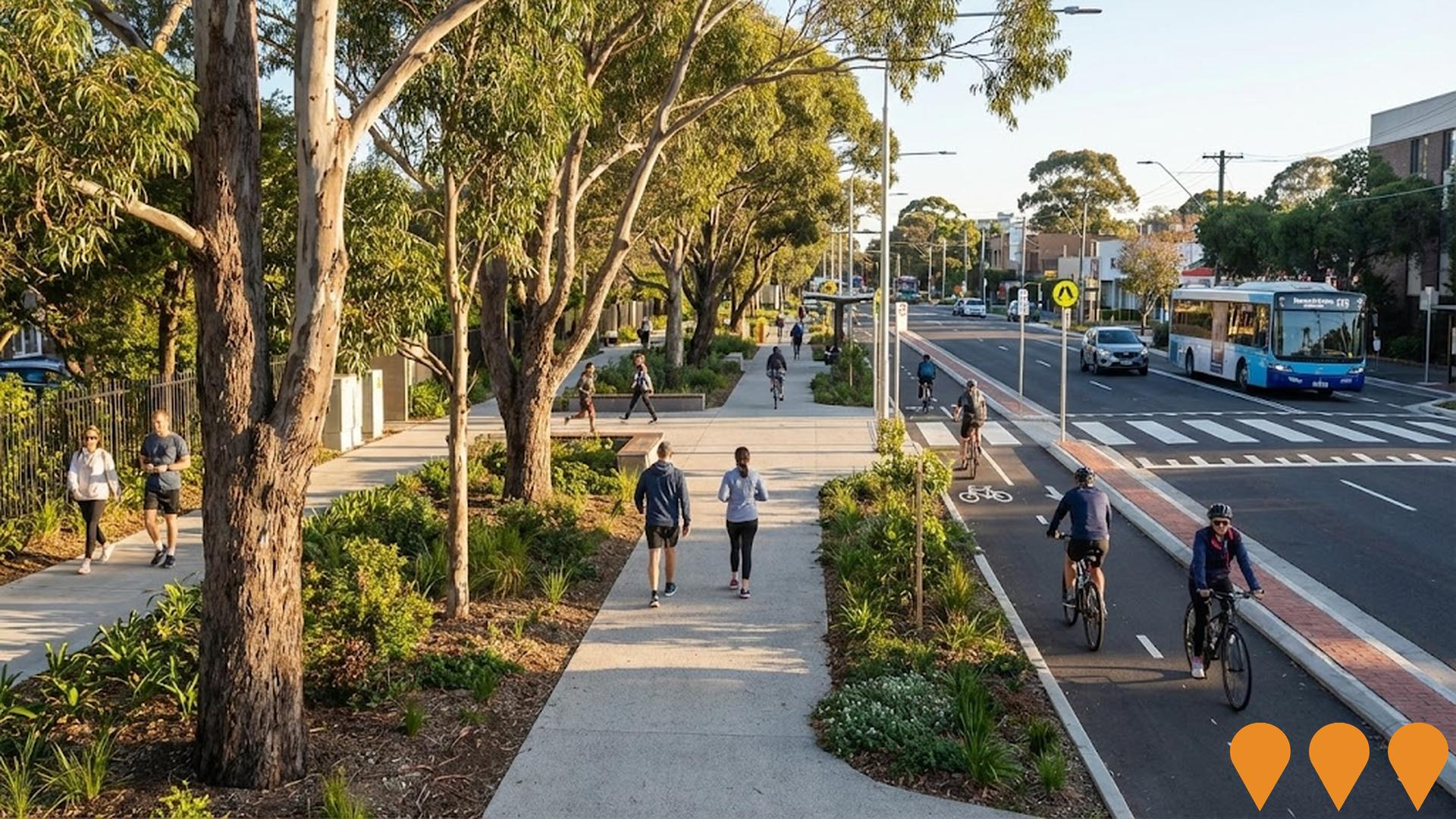
North Strathfield Metro Station
New underground metro station forming part of the Sydney Metro West project. Located adjacent to the existing North Strathfield railway station, it will provide interchange with Sydney Trains T9 Northern Line services and serve the Bakehouse Quarter and growing Homebush precinct. Features include a new station entrance on Queen Street, lift access to all platforms, platform screen doors and air-conditioned trains running every 4 minutes in peak periods.

Strathfield Council Parks Upgrades - Western Sydney Infrastructure Grants Program
Five major park upgrade projects funded through NSW Government's Western Sydney Infrastructure Grants Program. Projects include Hudson District Park East ($8.2M) with upgraded oval and pavilion, Begnell Field Revitalisation ($7.8M) with female change rooms and field improvements, Airey Park Refurbishment ($4.2M) with drainage and amenities upgrades, Strathfield Park Revitalisation ($1.6M) with new basketball court and facilities, and Cooke Park Skatepark Upgrade ($573K) with expanded concrete footprint and improvements. Community consultation completed August 2024, final plans pending release before construction commences.
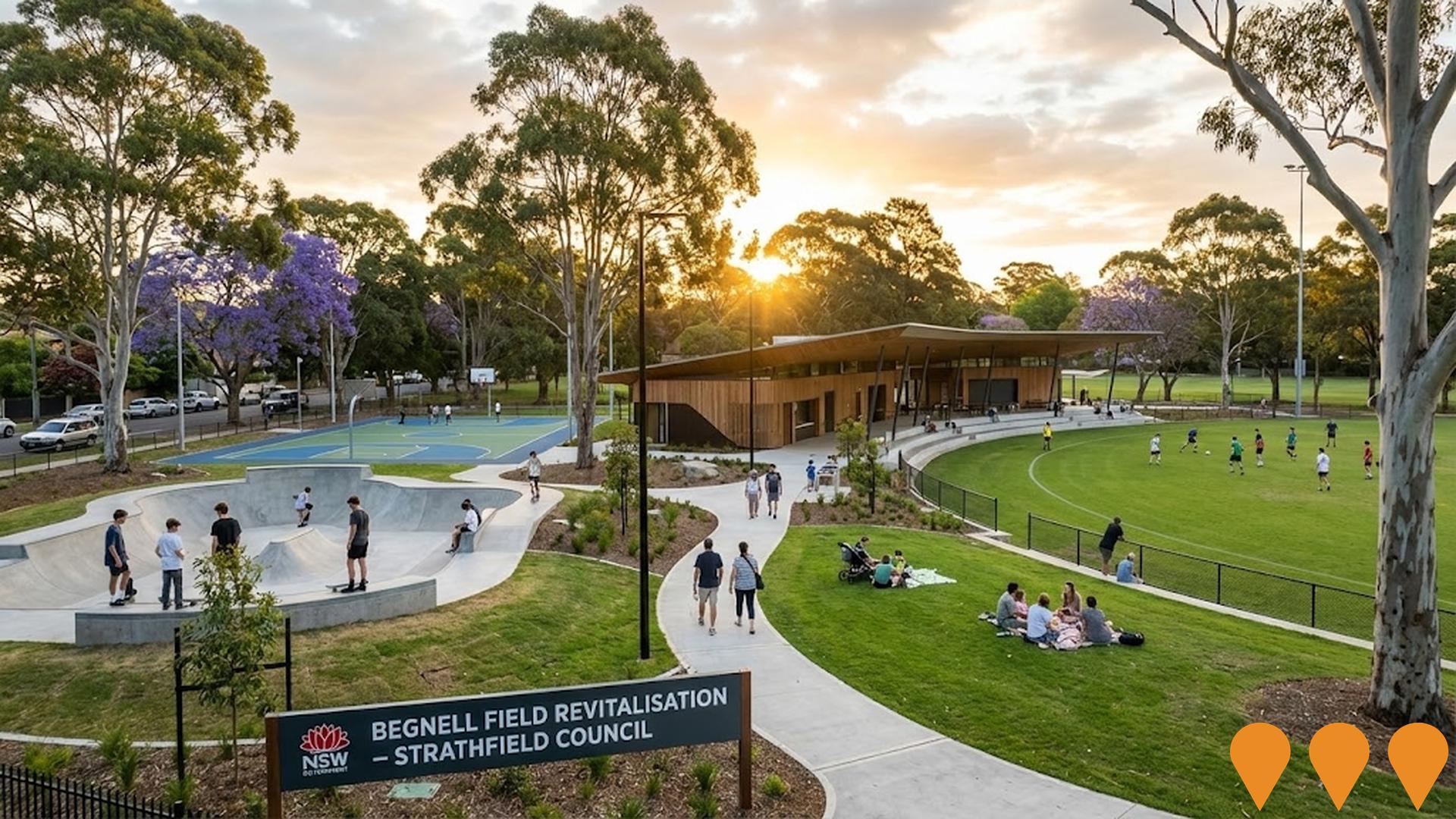
Billbergia Concord West Master-Planned Community
Billbergia is planning a vibrant new mixed-use residential precinct at 1 King Street, Concord West, under the NSW Housing Delivery Authority pathway. The proposal includes approximately 1,400 dwellings in 8 buildings ranging from 6 to 40 storeys, local retail and commercial floorspace, more than 5,000 sqm of high-quality landscaping and open space including a new 4,000 sqm park, dedicated cycle and pedestrian connections, new streets, and additional public infrastructure such as a childcare centre, medical/health services, and a retail and food precinct. The development will deliver over $100 million in funding for State and local government infrastructure.

Strathfield Town Centre Masterplan
Council-led masterplan to guide renewal of the Strathfield Town Centre, including Strathfield Square and Strathfield Plaza precincts. In 2025 Council exhibited a draft Key Directions Report and appointed Hassell to lead the multi-disciplinary team preparing the draft masterplan. Focus areas include improved public spaces and pedestrian connections, a more vibrant retail and dining offer, integrated transport access, and a greener, more inclusive town centre.

Enfield Aquatic Centre Redevelopment
State-of-the-art redevelopment of Sydney's oldest freshwater Olympic swimming pool (built 1933) featuring a new 50m outdoor pool with heating provisions, children's area, leisure centre, cafe with indoor/outdoor functionality, health and fitness centre, innovative energy-efficient plant equipment, accessible covered walkways, new shading structures and bleachers, fully accessible amenities, landscaping inspired by Aboriginal heritage, multipurpose community room, and upgraded drainage system. Community consultation completed July 2025 with design feedback being incorporated by architects.
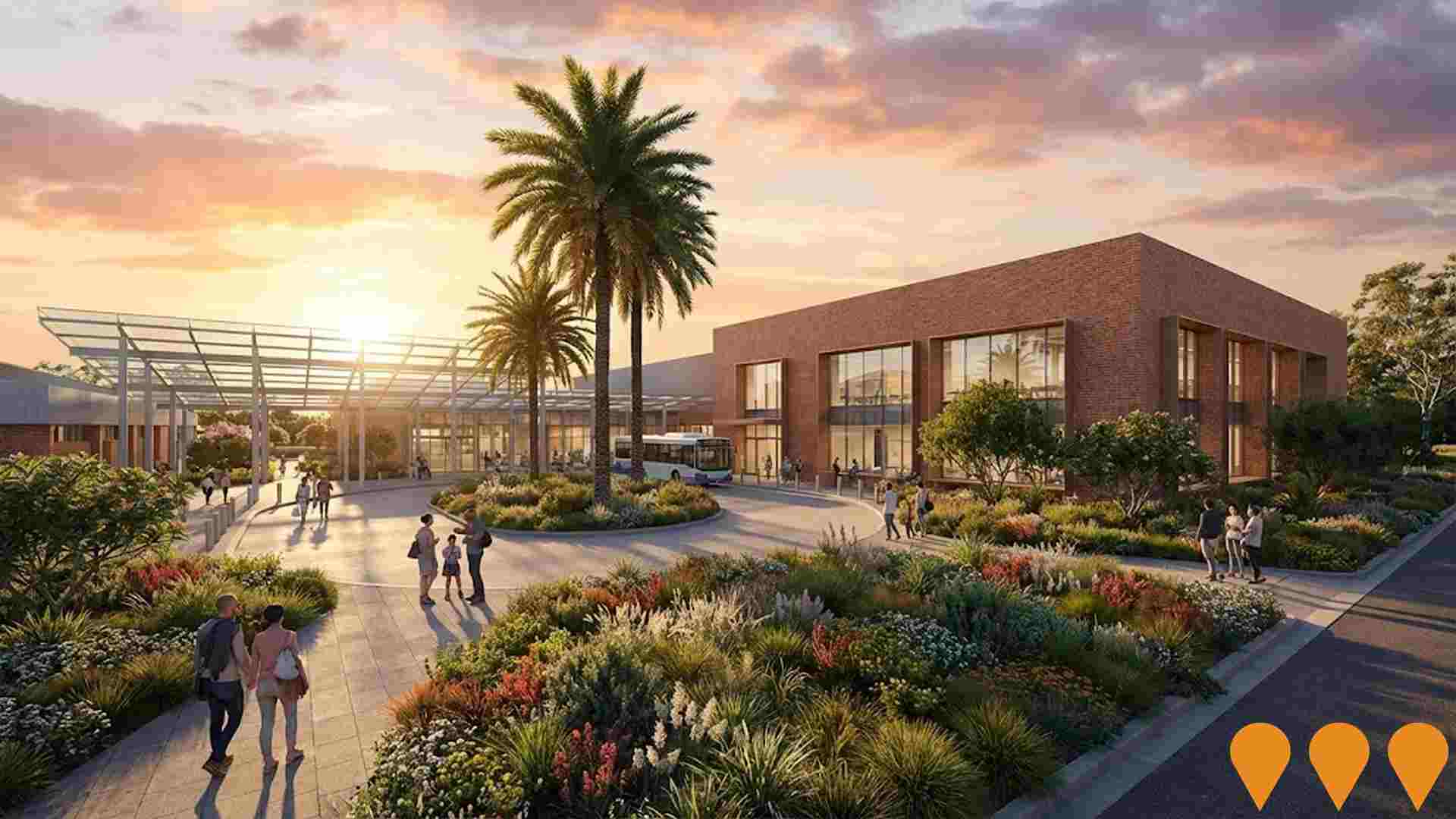
Employment
The labour market in Strathfield - West shows considerable strength compared to most other Australian regions
Strathfield-West has a highly educated workforce with strong representation in professional services. Its unemployment rate was 2.9% as of June 2025, which is 1.3% below Greater Sydney's rate of 4.2%.
Employment growth over the past year was estimated at 3.9%. As of June 2025, there were 5,173 residents in work and workforce participation was on par with Greater Sydney's 60.0%. Key industries of employment among residents are health care & social assistance, professional & technical services, and retail trade. Health care & social assistance has a particularly notable concentration, with employment levels at 1.4 times the regional average.
Transport, postal & warehousing, however, has limited presence with 3.2% employment compared to 5.3% regionally. The area appears to offer limited local employment opportunities as indicated by the count of Census working population vs resident population. Between June 2024 and June 2025, employment levels increased by 3.9%, labour force increased by 4.3%, resulting in an unemployment rise of 0.4 percentage points. In comparison, Greater Sydney recorded employment growth of 2.6%, labour force growth of 2.9%, with unemployment rising by 0.3 percentage points. Jobs and Skills Australia's national employment forecasts from May 2025 suggest potential future demand within Strathfield-West. These projections estimate national employment expansion at 6.6% over five years and 13.7% over ten years, with growth rates varying significantly between industry sectors. Applying these projections to Strathfield-West's employment mix suggests local growth of approximately 7.5% over five years and 15.1% over ten years.
Frequently Asked Questions - Employment
Income
The economic profile demonstrates above-average performance, with income metrics exceeding national benchmarks based on AreaSearch comparative assessment
Strathfield-West has one of Australia's highest incomes based on latest ATO data aggregated by AreaSearch for financial year 2022. Its median income is $47,629 and average income is $79,511, compared to Greater Sydney's $56,994 and $80,856 respectively. Estimates as of September 2025, considering a 12.61% Wage Price Index growth since financial year 2022, are approximately $53,635 (median) and $89,537 (average). Census data shows household incomes rank at the 94th percentile ($2,726 weekly). The $4000+ earnings band comprises 33.1% of the community (2,974 individuals), differing from regional levels where the $1,500 - 2,999 category is predominant at 30.9%. Higher earners make up a substantial 45.8%, indicating strong purchasing power. Housing consumes 13.8% of income, with residents ranking in the 94th percentile for disposable income and the area's SEIFA income ranking placing it in the 9th decile.
Frequently Asked Questions - Income
Housing
Strathfield - West is characterized by a predominantly suburban housing profile, with above-average rates of outright home ownership
Strathfield - West's dwelling structures, as per the latest Census, consisted of 78.6% houses and 21.4% other dwellings (semi-detached, apartments, 'other' dwellings), contrasting with Sydney metro's 33.5% houses and 66.5% other dwellings. Home ownership in Strathfield - West stood at 43.0%, with mortgaged dwellings at 36.2% and rented ones at 20.7%. The median monthly mortgage repayment was $3,200, exceeding Sydney metro's average of $2,436. Median weekly rent in Strathfield - West was $530, compared to Sydney metro's $465. Nationally, Strathfield - West's mortgage repayments were significantly higher than the Australian average of $1,863, and rents substantially above the national figure of $375.
Frequently Asked Questions - Housing
Household Composition
Strathfield - West features high concentrations of family households, with a higher-than-average median household size
Family households constitute 81.7% of all households, including 47.5% couples with children, 23.9% couples without children, and 9.0% single parent families. Non-family households make up the remaining 18.3%, with lone person households at 15.2% and group households comprising 2.9%. The median household size is 3.1 people, which is larger than the Greater Sydney average of 2.5.
Frequently Asked Questions - Households
Local Schools & Education
The educational profile of Strathfield - West exceeds national averages, with above-average qualification levels and academic performance metrics
Strathfield-West's educational attainment is notably higher than broader benchmarks. Specifically, 50.2% of residents aged 15 and above hold university qualifications, compared to 30.4% nationally and 32.2% in NSW. Bachelor degrees are the most common at 33.9%, followed by postgraduate qualifications (13.4%) and graduate diplomas (2.9%). Vocational pathways account for 18.7% of qualifications, with advanced diplomas at 9.2% and certificates at 9.5%.
Educational participation is high, with 30.0% of residents currently enrolled in formal education. This includes 9.0% in tertiary, 8.6% in secondary, and 8.1% in primary education. Strathfield-West's five schools have a combined enrollment of 3,685 students. The area has above-average socio-educational conditions (ICSEA: 1056) and functions as an education hub with 41.0 school places per 100 residents, significantly higher than the regional average of 15.9. This attracts students from surrounding communities.
Frequently Asked Questions - Education
Schools Detail
Nearby Services & Amenities
Transport
Transport servicing is good compared to other areas nationally based on assessment of service frequency, route connectivity and accessibility
Strathfield-West has 85 active public transport stops, all of which are bus stops. These stops are served by 37 different routes that together facilitate 1,620 weekly passenger trips. The area's transport accessibility is rated as excellent, with residents on average located just 127 meters from the nearest transport stop.
Across all routes, there is an average service frequency of 231 trips per day, which equates to approximately 19 weekly trips per individual stop.
Frequently Asked Questions - Transport
Transport Stops Detail
Health
Strathfield - West's residents boast exceedingly positive health performance metrics with very low prevalence of common health conditions across all age groups
Strathfield-West shows excellent health outcomes with low prevalence of common conditions across all ages. Private health cover stands at approximately 59% (5,337 people), compared to 57.3% in Greater Sydney.
The most prevalent conditions are arthritis and diabetes, affecting 5.8% and 5.1% respectively. 76.5% of residents report no medical ailments, similar to the 77.0% in Greater Sydney. Residents aged 65+ comprise 20.8% (1,870 people), higher than Greater Sydney's 14.5%. Seniors' health outcomes align with the general population's profile.
Frequently Asked Questions - Health
Cultural Diversity
Strathfield - West is among the most culturally diverse areas in the country based on AreaSearch assessment of a range of language and cultural background related metrics
Strathfield-West has a population where 47.9% were born overseas, and 58.5% speak a language other than English at home. Christianity is the predominant religion in Strathfield-West, with 53.7%. Hinduism is overrepresented compared to Greater Sydney, comprising 10.6% of the population versus 11.2%.
The top three ancestry groups are Chinese (20.3%), Other (15.4%), and Lebanese (10.3%), which is significantly higher than the regional average of 3.1%. Notable overrepresentations include Korean at 4.4%, Sri Lankan at 1.5%, and Vietnamese at 3.8%.
Frequently Asked Questions - Diversity
Age
Strathfield - West's median age exceeds the national pattern
Strathfield-West's median age is 41 years, which is significantly higher than Greater Sydney's average of 37 years and slightly older than Australia's median age of 38 years. In comparison to the Greater Sydney average, the 55-64 age group is notably over-represented in Strathfield-West at 13.5%, while the 35-44 age group is under-represented at 10.6%. According to the 2021 Census, the 15-24 age group has grown from 14.2% to 15.6% of the population, and the 75-84 age group has increased from 5.9% to 7.0%. Conversely, the 45-54 age group has declined from 13.0% to 11.6%, and the 5-14 age group has dropped from 11.6% to 10.5%. Demographic modeling indicates that Strathfield-West's age profile will change significantly by 2041. The 35-44 age cohort is projected to grow the strongest at 104%, adding 986 residents to reach a total of 1,938. Meanwhile, both the 0-4 and 65-74 age groups are expected to have reduced numbers.
